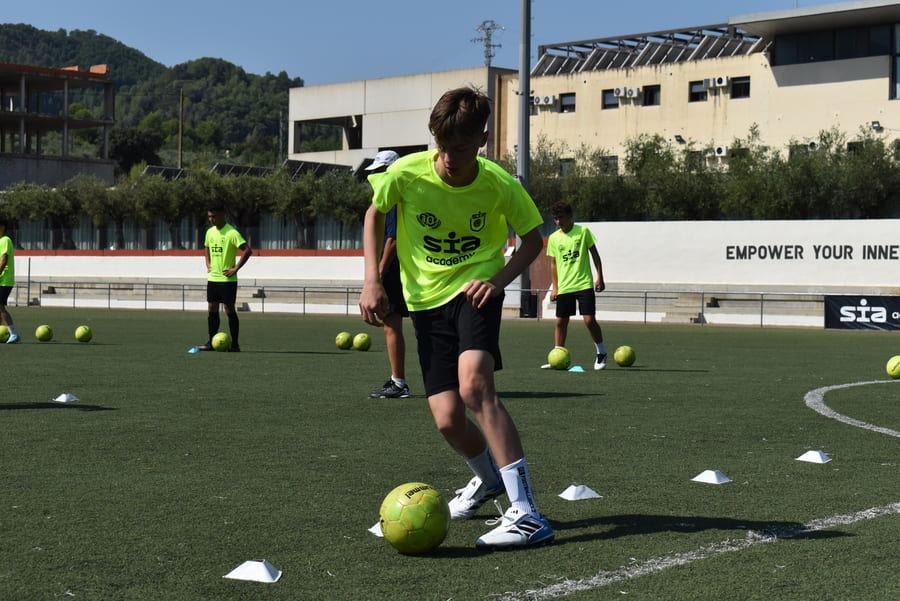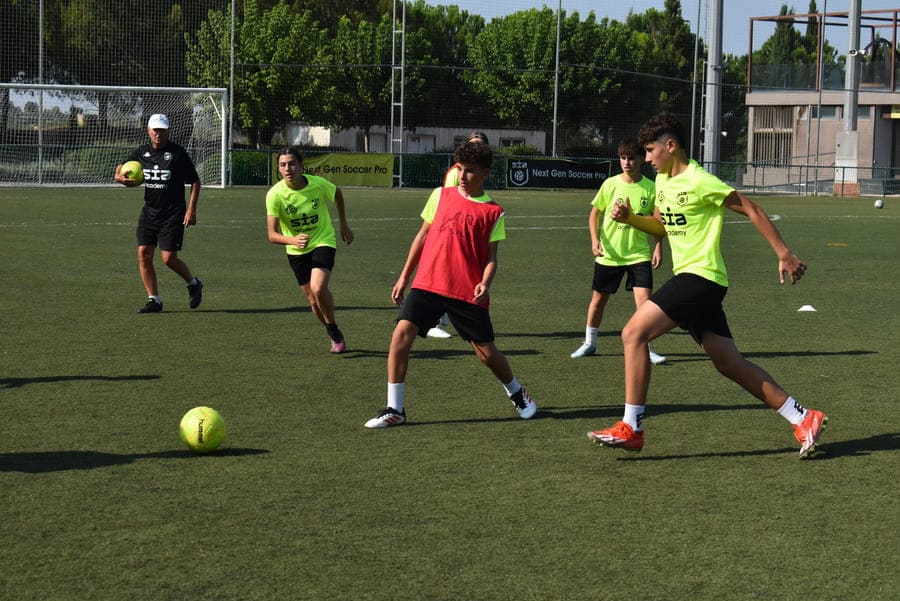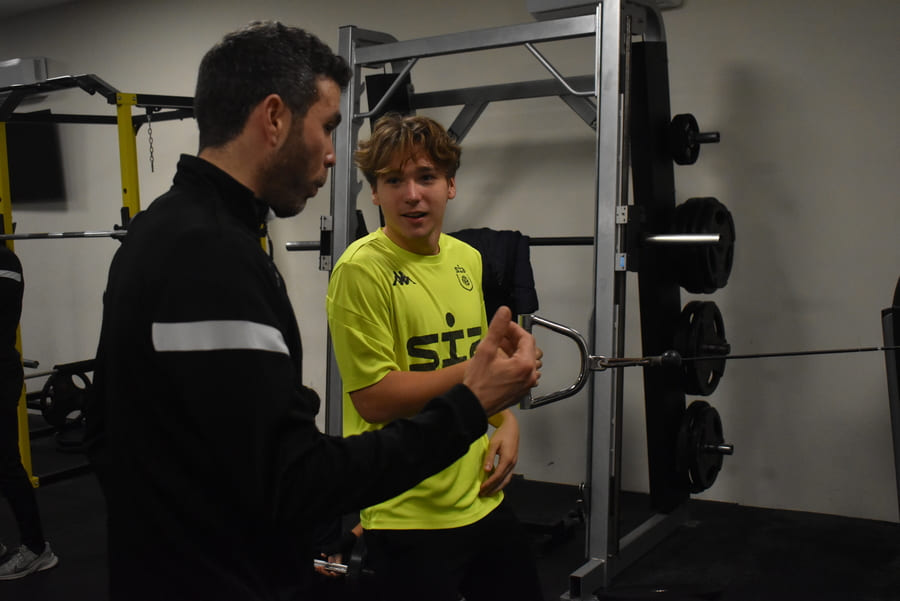When we talk about training and improving sports performance, one of the most important factors to consider is heart rate, that is, the frequency at which the heart beats per minute. This indicator not only reflects an athlete’s cardiovascular condition, but also allows training intensity to be adjusted to optimize results and avoid risks.
Heart rate varies depending on age, fitness level, the type of activity performed, and other factors such as rest or stress. For athletes, especially in high-demand sports like football, monitoring and understanding heart rate becomes an essential tool for guiding progress and preventing injuries.
In this regard, SIA Academy has adopted a scientific and personalized approach to working with their athletes’ heart rates, integrating them into their training plans. Ximo, the physical trainer responsible for monitoring and planning the physical load of the players at the academy, points out that “knowing the heart rate training zones allows us to optimize each session and tailor workouts to the individual needs of the player.”
Table of contents
What heart rate tells us
Heart rate provides valuable information about how the body responds to physical effort. For example, an athlete with a low resting heart rate usually has a more efficient heart, as it requires fewer beats to pump the same amount of blood. On the other hand, slow recovery after exercise may indicate accumulated fatigue or insufficient fitness.
In sports practice, there are five heart rate zones, each with specific benefits:
- Zone 1 (50–60% max HR): active recovery, low impact.
- Zone 2 (60–70%): improvement of aerobic base.
- Zone 3 (70–80%): increased endurance and cardiovascular efficiency.
- Zone 4 (80–90%): anaerobic threshold development.
- Zone 5 (90–100%): maximum power, explosive efforts.
Training in the right zone according to physical goals is key to progressing without overtraining. In this aspect, SIA Academy use technological tools such as heart rate monitors, GPS devices, and analysis software to ensure that players work efficiently.

Data-based physical development
The physical development of a footballer is not only about running faster or lifting more weight. It is a comprehensive process that involves endurance, strength, speed, coordination, and above all, effort control. Heart rate helps quantify that effort objectively.
Ximo explains that “at SIA Academy, we apply science- and technology-based methods to control each player’s internal load — that is, how their body reacts to training.” Thanks to this approach, they can individualize physical plans and detect when a player needs rest, higher intensity, or a modified routine.
This continuous monitoring makes it possible to detect imbalances or signs of overload before they manifest as injuries. It also helps measure physical progress over the weeks and adjust the training volume according to the season, individual goals, and position on the pitch.
Practical applications in football
In the football context, where efforts are intermittent and high-intensity, heart rate becomes a reference point for monitoring real performance during training and matches. Through real-time heart rate analysis, coaches and physical trainers can tell whether an exercise is achieving its goal or needs to be adjusted.
For example, during a high-intensity session, if a player does not reach zone 4 or 5, it may be a sign they are not pushing their capacity to the limit. Conversely, if they maintain very high heart rates during low-load exercises, they may be accumulating fatigue or suffering from a physical issue that needs attention.
At SIA Academy, this kind of analysis is part of everyday practice, allowing young talents to develop with a solid and safe physical foundation.

Education and athlete autonomy
One of the most valuable aspects of working with heart rate is the ability to educate the athlete to know their body and self-regulate. Understanding what it means to train at certain intensities helps the player not just follow instructions, but understand the purpose of each exercise.
From early stages, SIA Academy teaches players to interpret their heart rate and make decisions during play and training based on it. This creates more aware, responsible athletes with a greater capacity for sustainable performance.
Heart rate is not just a number — it’s a precise guide for developing the body in an intelligent and safe way. In a professional environment like SIA Academy, where the goal is to train high-level athletes, its monitoring becomes a key piece in achieving optimal physical development.
Through the use of advanced technology, scientific knowledge, and the experience of professionals like Ximo, young footballers not only improve their performance but also learn to understand and care for their bodies for the future. Because in the end, as Ximo says: “Physical development is not about doing more, but about doing better.”






